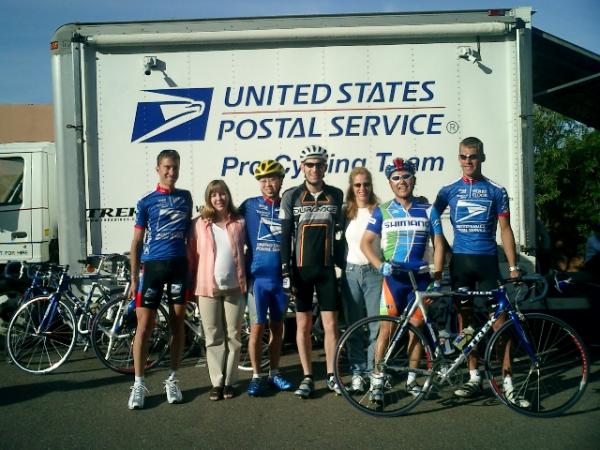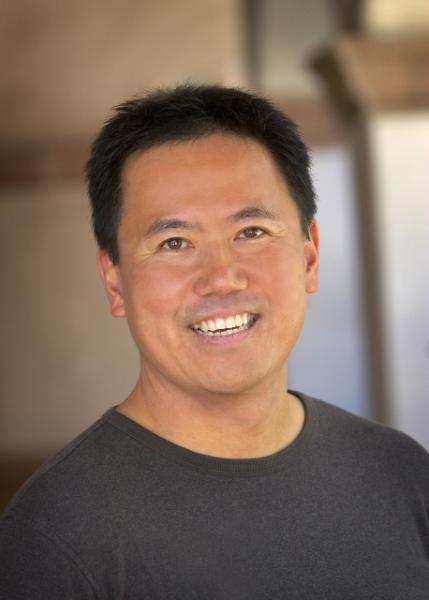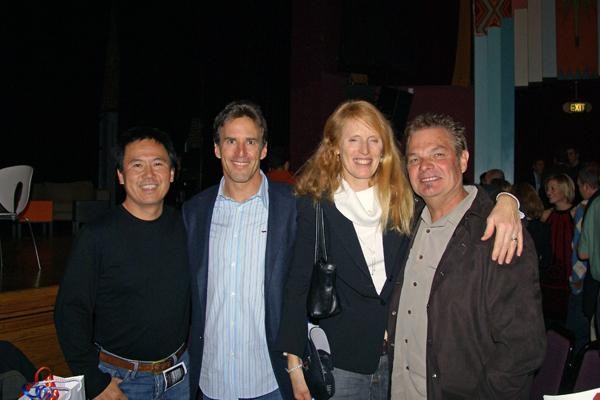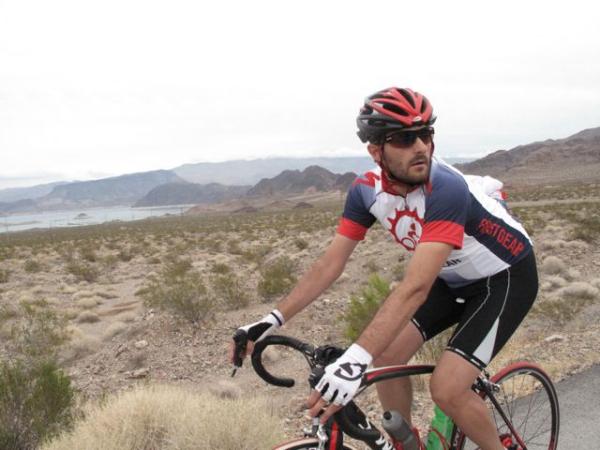Profile: Kozo Shimano
Ousted from his family company and following his passion



He was once one of the most influential men in professional cycling but having been ousted from his family business, Kozo Shimano finds he is happier than ever and still driven by his passion for the sport with roles in both Mad Fiber Wheels and NICA.
The halls at the Interbike trade show in Las Vegas are an oceanic mishmash of all that’s good, bad and ugly about cycling. Dollar-seeking business cadres, suits and aimless chancers - just the randomly marooned professional bike riders dotted from stand to stand like buoys offer sense and a degree of sanity.
It’s gear and clothing in Las Vegas, only Hunter S Thompson would struggle with its absurdness.
If you’re really lucky you might come across a man named Kozo as he sails along the show’s red carpets, purveying each brand’s stock with a friendly smile, perhaps a greeting and if the exhibitor is lucky enough, a few words of wisdom.
Nowadays, Kozo is an investor in one of the fastest growing and most highly innovative wheel companies, MadFiber, and helps both develop their product and dips into marketing and branding. Along with that he has also dedicated himself to NICA, a US body that helps develop and encourage school children into mountain bike racing. It’s a far cry from the position he held within the sport in 2008.
Kozo is, or rather was, part of the Shimano company. The same brand and multinational that netted over US $240 million in profits in 2010 (based on sales of US$2.7 billion) and remains one of the most integral and important companies with the bike industry.
But this year Kozo isn’t at Interbike to represent his family business, because back in 2008 he was unceremoniously removed from the company.
Get The Leadout Newsletter
The latest race content, interviews, features, reviews and expert buying guides, direct to your inbox!
“I was there one day and gone the next,” he says, a smile showing that either any bitterness has evaporated or he’s a fantastic actor.
In a ‘leave your phone and keys on your desk’ moment, the 49-year-old was swiftly removed from the company altogether.
“That was it. My name is still on the building but after that day I was no longer part of things. I’ve not spoken to that part of the family ever since. Not a word.”
It’s a startling revelation from a man who had dedicated almost his entire working life to the family business, which is still run by his cousins.
Kozo moves west
Born in Japan in 1962, Kozo moved to New Jersey at the age of two, just as Shimano built its first US headquarters on the east coast. A traditional American upbringing and schooling followed before a short stint in Japan once he completed a degree in engineering.
Back in his native homeland, he studied Japanese, something that had been lacking from his Western influence childhood.
However, with his studies completed, it wasn’t long before Kozo had to start work. The predictable option was a career in the family company, where hard work but a certain degree of instant comfort was implied.
“But I wanted a job where my name didn’t mean anything and where all I had were the skills I brought to the table. I wanted to forge a path of my own accomplishments,” he says.
So in 1986 he began working at ASICS, primarily on their outdoor/footwear clothing range. The job lasted a year before it was announced that Shimano was moving into the outdoor/footwear clothing range and a difficult decision needed to be made.
“I felt it best to leave so that there wasn’t a conflict, or a perceived conflict of interests.”
So with a year at ASICS under his belt Kozo returned to Japan once again but this time he joined the family-led business and spent the next 6 years there.
“Working at Shimano was interesting because of the dynamics. The way it works in Japan is totally different to US. When I was in Japan at that time, it was still a family-style run company with my uncles in charge. They ran it as if they were responsible for the wellbeing of all the employees. I tried to bring that to the US with some success and failure involved.”
Culture Clash
In 1992, Kozo moved back to the US base and tried to implement some of those styles and traditions in the Californian satellite office. Career-wise he moved up the ladder too, from marketing, to sales, to division head, to vice president, to president by the time of his departure in 2008.
“There were instances where I overrode corporate policy, or created a policy where there wasn't any. But unfortunately, the privacy laws in the State of California prevent me from going into details. When one employee was in great financial difficulty, arrangements were made so that the employee could overcome such hardship. When another employee had a serious illness within the family, provisions were made whereby that employee did not have to show up to work every day.”
“In the end, the mistrust between 'corporate executives' and the 'rank and file' employees, that’s so ingrained in American corporate culture, made it difficult for many of such ideas to succeed.”
Publicly, and somewhat frustratingly, Kozo can’t comment as to why he was removed from his position. There was unquestionably mounting pressure on his shoulders and to the outside world, although profits continued to rise, there appeared to be a power struggle at the top of the company.
The story is still wrapped up in legal red tape but according to Kozo he’s still unclear as to how long certain individuals had wanted him out.
Likewise, he can’t comment on the companies current or future decisions, though if you browse through one of his social network profiles you’ll notice that his wife Martha can and does offer her opinion from time to time. Legally, of course, there’s nothing to stop her.
“Thing weren’t going in the direction I wanted I thought it should,” Kozo says broadly.
“I kept on going in the vein that it was the company I was raised in rather than the company it had evolved into, but it didn’t work out and I was in the minority when it came to decisions.”
For many, the notion of mixing business with the personal baggage of family would be too hard a burden and Kozo found himself ousted from the building that ‘has his name on it,’ and while he claims that he has made several attempts to form a personal reconciliation, his offers have been ignored.
“I can’t believe they did some of the things they did but it’s not my call to make. I’ve reached out in the past to relatives and they’ve not responded. There are two relatives that I still see, and we had dinner recently but others just don’t want that contact.”
Yet to all intent and purposes, that day in October 2008 still marks a monumental shift in Kozo’s life.
“To the outside world it seemed like one day I was there, the next I was gone and certainly no one could get in contact with me unless they had my personal email address or house phone number.”
His removal came just before a Ride for The Roses with his long-time friend Lance Armstrong.
“I remember having to call Lance Armstrong up and say I can’t come because I’m no longer with Shimano. That was tough,” he says.
One may have forgiven him if he’d turned his back not just on the remaining family that talked to him, but on the bike industry as a whole. After all, he had the skills and know-how to branch out into a number of fields, shown by his work with NHL teams that saw him develop protective clothing.
Picking up the pieces
Initially, Kozo started his own firm (Kozo Design, Inc.). But with potential customers wary of Kozo's relationship with Shimano, Inc. there were no clients. He then turned his efforts to developing his own brand of products, and formed a company to distribute them - Kozo Gear. With clients calling him to order product, Kozo Gear has been mentioned in a few publications - and even been mentioned on national TV during a Stanley Cup playoff game.
But running companies and profits isn’t what Kozo appears to be about and as he wanders through the halls at Interbike and talks about his future, it’s clear that he’s as passionate as ever about the development of product within cycling.
“It took a while to get over but I’m used to it and to be honest I don’t think I’ve ever left the sport. I’ve been to Interbike every year since, trying to figure out how to stay involved and I dabble in things here and there. The sport of cycling is something I hold close to my heart.”
“Nowadays it’s about being able to follow my passion, and that’s the product and the sport and anything that benefits those areas, I think I can get involved with.”
One such project is NICA, which encourages high school children to be introduced to mountain bike races in a more organised fashion.
Kozo sits on the board of the growing phenomenon that’s spreading across the States.
“It’s about giving back. I was in a situation where I was trying to figure out what to do. I was, and still am, involved with the Lance Armstrong Foundation but I decided to give NICA a try and I’ve been involved ever since.”
The same can be said of his work with Mad Fiber wheels, although unlike NICA, Kozo has a financial stake in the growing business.
“With things like Mad Fiber wheels, it allows collaboration on a passion on the structure of wheels. I’m an advisor and investor there and it’s worked out well.”
In following through on a lifelong friendship with Ric Hjertberg, Kozo is very excited about the business venture. "One thing I've learned over the years, I'll now only work with people that I know very well and trust.”
“When my Uncle Keizo passed away from cancer he instilled this message in me that’s stuck with me ever since - "Always remember the people that got you to where you are. Remember to 'give back'." He was planning to quit Shimano (if he recovered) and 'return the favor'. Keizo was going to devote his life to help those fighting cancer. He wanted to put it all to one side for something he believed in and that’s what has given me a guiding light since I left Shimano.” That's the reason I 'Ride in Memory of Uncle Keizo' every year - at the Livestrong Challenge (Ride for the Roses).”
Daniel Benson was the Editor in Chief at Cyclingnews.com between 2008 and 2022. Based in the UK, he joined the Cyclingnews team in 2008 as the site's first UK-based Managing Editor. In that time, he reported on over a dozen editions of the Tour de France, several World Championships, the Tour Down Under, Spring Classics, and the London 2012 Olympic Games. With the help of the excellent editorial team, he ran the coverage on Cyclingnews and has interviewed leading figures in the sport including UCI Presidents and Tour de France winners.
